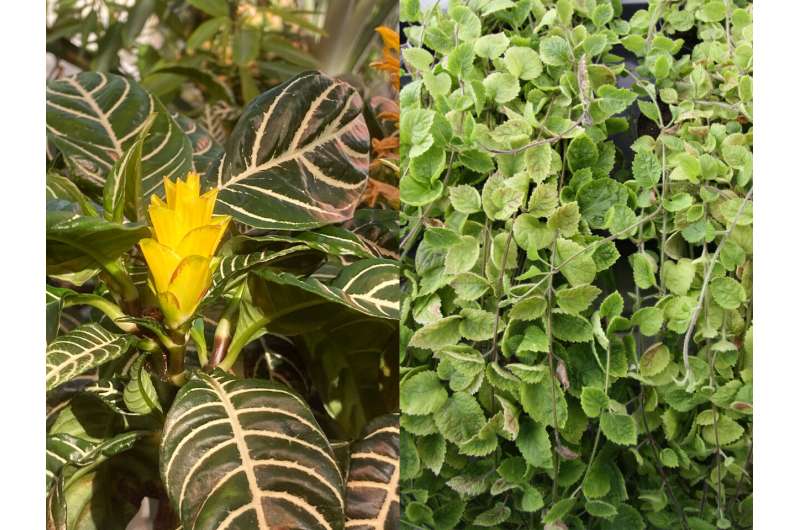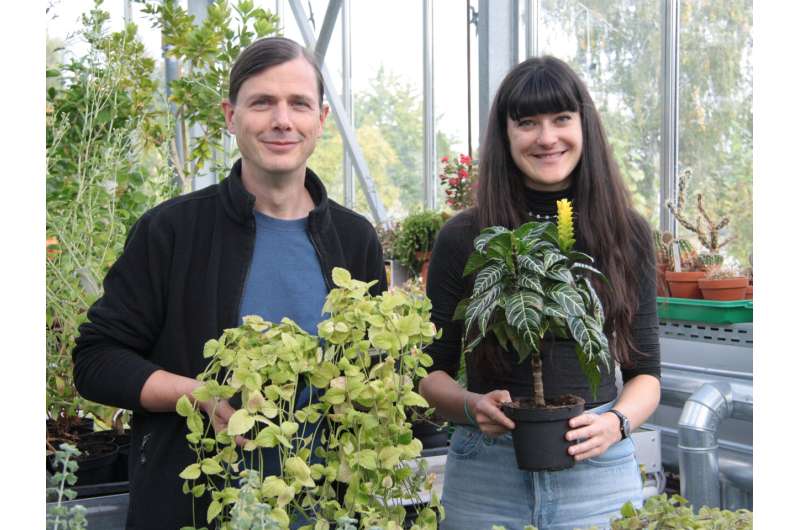This article has been reviewed according to Science X's editorial process and policies. Editors have highlighted the following attributes while ensuring the content's credibility:
fact-checked
peer-reviewed publication
trusted source
proofread
Nature is inventive—the same substance is produced differently by plants

Maize plants form special compounds derived from indole, the so-called benzoxazinoids. They are considered ecologically important because they act against a wide range of herbivores and reduce their feeding. Benzoxazinoids also exhibit antimicrobial properties and are thought to be involved in mediating plant-plant interactions.
Their biosynthesis in maize has been known since the 1990s. Meanwhile, their biosynthetic pathway has been described in several grasses, but benzoxazinoids have also been found in other plant species. Their distribution is peculiar: While specialized metabolites often occur in specific evolutionary related plant species, benzoxazinoids show the opposite behavior and occur sporadically in many distantly related plant families.
Several attempts to elucidate this metabolic pathway not only in maize but also in distantly related species were unsuccessful. Accordingly, the research goal of Tobias Köllner's group in the Department of Natural Product Biosynthesis at the Max Planck Institute for Chemical Ecology was clear, "We wanted to find out whether the ability to form benzoxazinoids evolved independently in different species."
The team used two distantly related eudicot plant species that produce benzoxazinoids for the studies: the golden dead-nettle Lamium galebodolon, which is found in sparse forests and forest edges on nutrient-rich soils in Europe, and the zebra plant Aphelandra squarrosa, a popular houseplant. They published their findings in Proceedings of the National Academy of Sciences.
For both species, the researchers created data sets of the compounds and genes expressed in different tissues and compared them to closely related species that do not produce benzoxazinoids. "This approach allowed us to identify candidate genes that may be involved in the formation of these compounds. We further characterized the candidate genes by expressing them in tobacco to find out if they are really involved in the production of benzoxazinoids," says Matilde Florean, first author of the study.

The researchers were able to show that the benzoxazinoid metabolic pathway evolved independently in maize and the two species under investigation. Tobias Köllner continues, "We found that, in contrast to maize where a number of closely related cytochrome P450 enzymes carry out specific steps of the metabolic pathway, different enzyme classes as well as unrelated enzyme families of cytochrome P450 were recruited."
In particular the discovery that the golden dead-nettle and the zebra plant use a dual-function flavin-containing monooxygenase, rather than two different cytochrome P450 enzymes as in grasses, was completely unexpected. Overall, the research team was surprised to find such a diversity of enzymes performing the same reactions.
"With this work, we have shown how flexible plant metabolism can be. We have shown that plants can independently invent very different strategies to make the same chemical compounds, and this has happened at least three times in the evolutionary history of benzoxazinoids," Sarah O'Connor, director of the Department of Natural Product Biosynthesis, says.
In the future, the team hopes to elucidate the biosynthesis of these compounds in even more plant families.
More information: Matilde Florean et al, Reinventing metabolic pathways: Independent evolution of benzoxazinoids in flowering plants, Proceedings of the National Academy of Sciences (2023). DOI: 10.1073/pnas.2307981120. doi.org/10.1073/pnas.2307981120
Journal information: Proceedings of the National Academy of Sciences
Provided by Max Planck Society




















